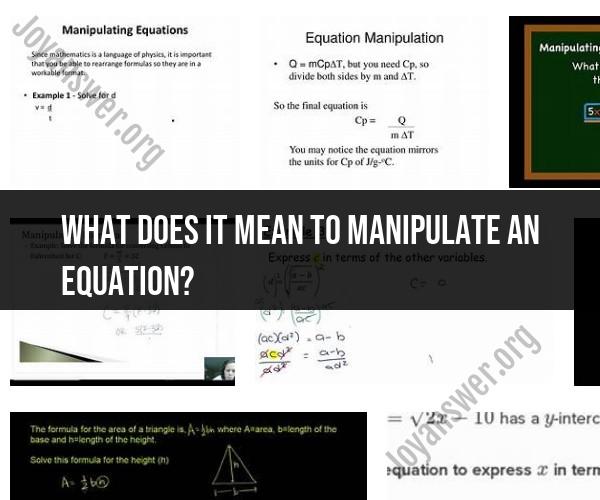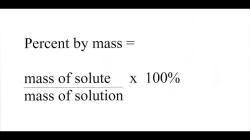What does it mean to manipulate an equation?
Manipulating an equation means performing a series of algebraic operations or transformations on an equation to simplify, isolate a variable, or solve for a particular unknown. The goal of equation manipulation is to make the equation more understandable, solvable, or suitable for a specific purpose. Here are some common techniques and actions involved in manipulating equations:
Isolating Variables: You may need to manipulate an equation to isolate a specific variable on one side of the equation. This often involves adding, subtracting, multiplying, or dividing both sides of the equation by a constant or another expression.
Simplifying Expressions: Equation manipulation can involve simplifying complex expressions on either side of the equation. This might include combining like terms, factoring, or using algebraic identities.
Solving for an Unknown: Manipulating equations is often used to solve for an unknown variable. This may require performing a series of steps to isolate the variable and determine its value.
Rearranging Terms: You can manipulate equations by rearranging terms on both sides to make the equation easier to work with or to reveal patterns and relationships.
Substituting Variables: Substitution involves replacing one variable with an expression or value to simplify the equation. This can make the equation more manageable or highlight specific relationships.
Factoring: Factoring is a technique used to rewrite expressions or equations by breaking them down into simpler components. Factoring can reveal common factors or make it easier to isolate variables.
Cross-Multiplication: Cross-multiplication is used when working with proportions or equations involving fractions. It simplifies equations by multiplying diagonally across the equal sign.
Clearing Fractions: To work with equations without fractions, you can multiply both sides by a common denominator to clear the fractions.
Completing the Square: This technique is often used in quadratic equations to manipulate them into a perfect square trinomial form, which is easier to solve.
Taking Roots: When dealing with equations containing square roots or other radicals, you can manipulate the equation by squaring both sides or taking the appropriate roots to eliminate radicals.
Setting Equal to Zero: Sometimes, equation manipulation involves setting an equation equal to zero, which can simplify solving or finding solutions.
Equation manipulation is a fundamental skill in algebra and mathematics in general. It's used in a wide range of applications, from solving equations in physics and engineering to analyzing data in statistics and economics. The specific manipulations performed on an equation depend on the problem at hand and the goal you want to achieve with the equation.













